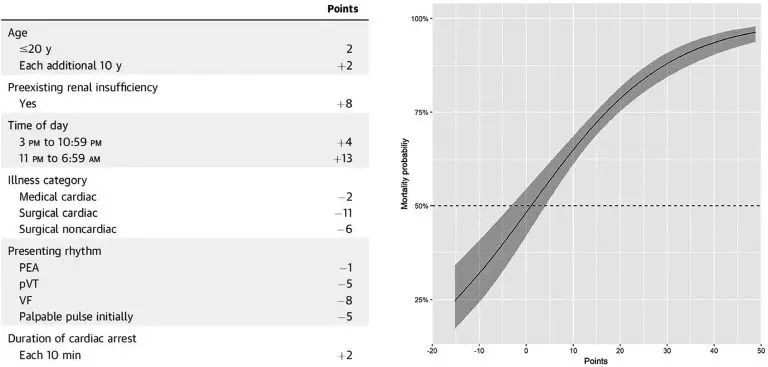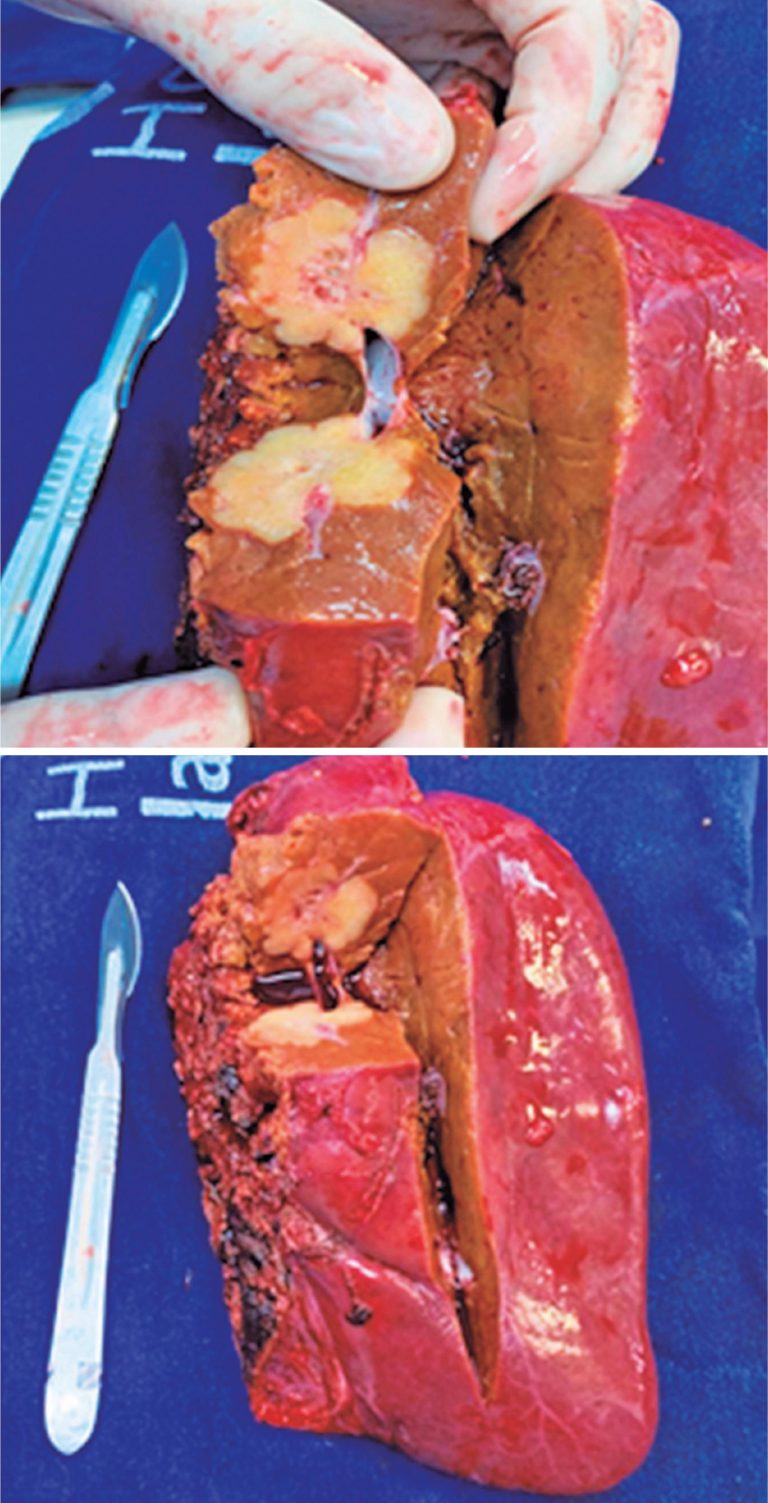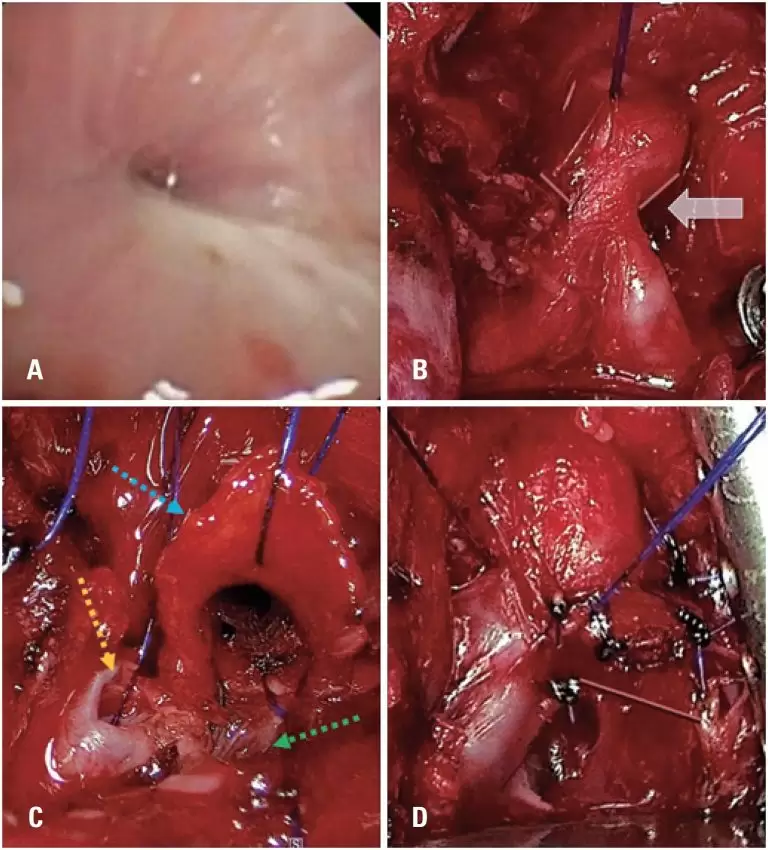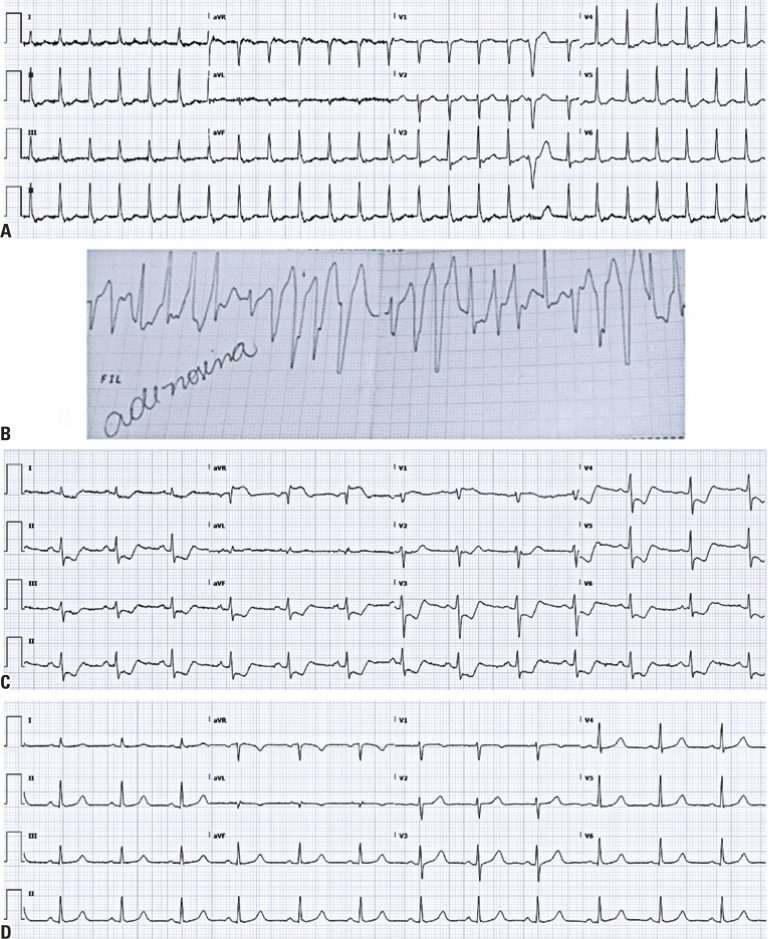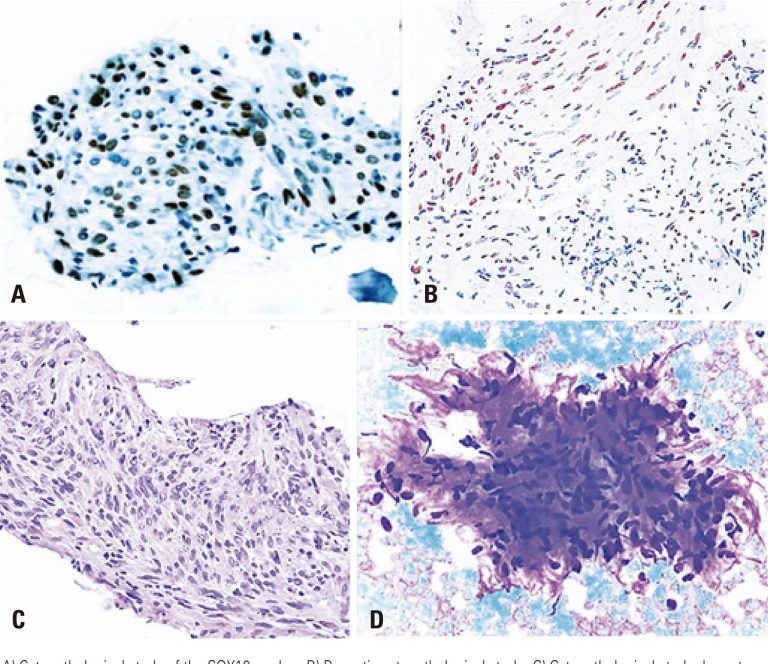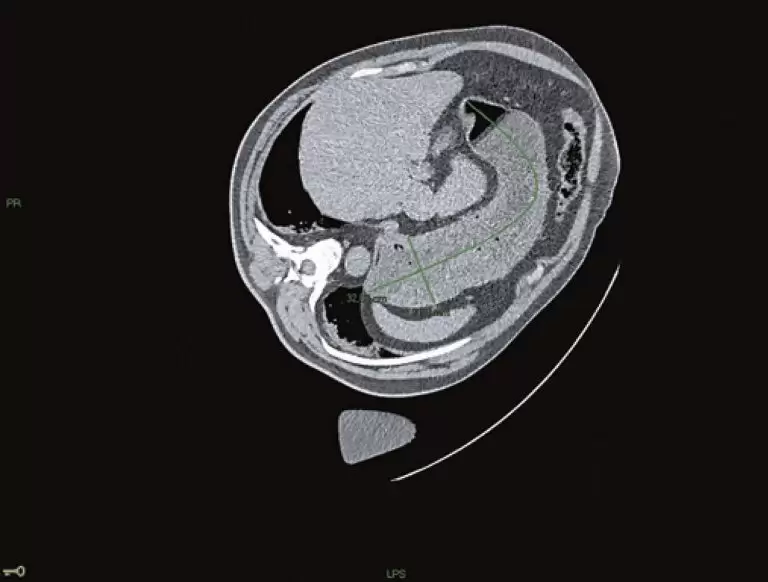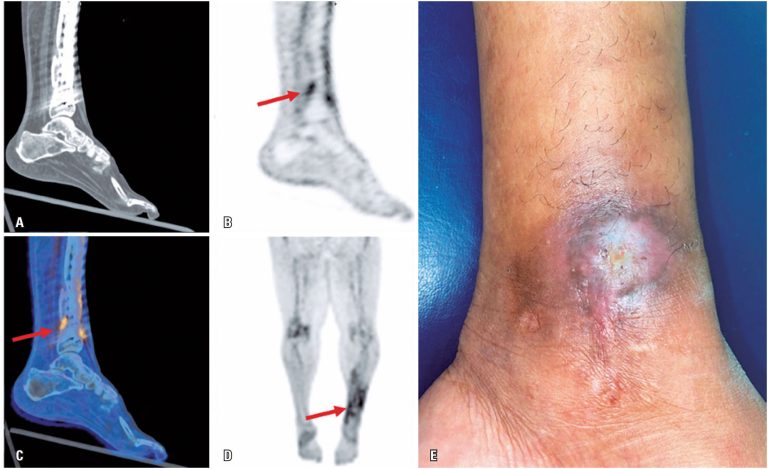21/Oct/2024
Extracorporeal cardiopulmonary resuscitation for a patient awaiting heart transplantation: a case report
DOI: 10.31744/einstein_journal/2024RC0922
ABSTRACT Extracorporeal cardiopulmonary resuscitation is a method of cardiopulmonary resuscitation that uses extracorporeal membrane oxygenation with conventional cardiopulmonary resuscitation and has emerged as a promising intervention for patients with refractory cardiac arrest. This report describes the case of a 44-year-old man at significant risk for mortality according to his high RESCUE-IHCA Score who was awaiting heart transplantation and experienced in-hospital cardiac arrest during hemodialysis. Prompt recognition, immediate activation of the extracorporeal membrane oxygenation team, and initiation of support within 60 […]
Keywords: Cardiac arrest; Cardiopulmonary resuscitation; Extracorporeal membrane oxygenation; Heart transplantation
17/Oct/2024
Simultaneous embolization of the right portal and hepatic veins before intrahepatic cholangiocarcinoma resection
einstein (São Paulo). 17/Oct/2024;22:eRC0524.
View Article17/Oct/2024
Simultaneous embolization of the right portal and hepatic veins before intrahepatic cholangiocarcinoma resection
DOI: 10.31744/einstein_journal/2024RC0524
ABSTRACT Major liver resections require extensive margins. Occasionally, insufficient parenchyma is available after surgery to maintain liver function. In such cases, vascular embolization in the affected lobe is necessary to induce contralateral lobe hypertrophy. We present a case of embolization of the right portal and hepatic veins prior to intrahepatic cholangiocarcinoma resection. Embolization was performed because of insufficient residual parenchyma on imaging studies. The patient recovered well with no signs of liver failure, and remains in remission at 3 years […]
Keywords: Bile duct neoplasms; Cholangiocarcinoma; Embolization, therapeutic; Hepatectomy; Hypertrophy
14/Jun/2024
Dynamic computed tomography angiography for noninvasive diagnosis of bow Hunter’s syndrome: a case report
DOI: 10.31744/einstein_journal/2024RC0582
ABSTRACT The focus of this case report is to technically describe a noninvasive diagnostic evaluation of bow Hunter’s syndrome using a dynamic computed tomography angiography protocol and discuss its advantages. In addition, we aimed to exemplify the quality of the study by presenting images of a 3D-printed model generated to help plan the surgical treatment for the patient. The dynamic computed tomography angiography protocol consisted of a first image acquisition with the patient in the anatomic position of the head […]
Keywords: Angiography, digital subtraction; Tomography, x-ray computed; Vertebral artery; Vertebrobasilar insufficiency
09/Apr/2024
Slide tracheoplasty for congenital tracheal stenosis with involvement of the carina and bronchi: a case report
DOI: 10.31744/einstein_journal/2024RC0659
ABSTRACT A female newborn presented with respiratory distress at birth and was diagnosed with congenital tracheal stenosis. The stenosis was positioned at the distal trachea and compromised the carina and the right and left bronchi. She underwent surgical treatment using circulatory life support with veno-arterial peripheral extracorporeal membrane oxygenation, and the airway was reconstructed using the slide tracheoplasty technique to build a neocarina. The patient had an excellent postoperative course, was successfully weaned from extracorporeal membrane oxygenation and invasive ventilation, […]
Keywords: Extracorporeal membrane oxygenation; Infant, Newborn; Trachea/surgery; Tracheal stenosis/congenital; Treatment outcome
22/Mar/2024
Torsades de pointes and myocardial infarction following reversal of supraventricular tachycardia with adenosine: a case report
DOI: 10.31744/einstein_journal/2024RC0522
ABSTRACT Adenosine is an antiarrhythmic drug that slows conduction through the atrioventricular node and acts as a coronary blood vessel dilator. This case report highlights two unusual life-threatening events following the use of adenosine to revert supraventricular tachycardia in a structurally normal heart: non-sustained polymorphic ventricular tachycardia and myocardial infarction. A 46-year-old woman presented to the emergency department with a two-hour history of palpitations and was diagnosed with supraventricular tachycardia. Vagal maneuvers were ineffective, and after intravenous adenosine administration, the […]
Keywords: Adenosine; Emergency service, hospital; Myocardial infarction; Tachycardia, supraventricular; Torsades de pointes
30/Jan/2024
Benign cervical schwannoma with tracheal invasion
DOI: 10.31744/einstein_journal/2024RC0528
ABSTRACT Schwannomas commonly develop in the cervical region, 25% – 45% of cases are diagnosed in this anatomical region. Tracheal neurogenic tumors are exceedingly rare and can be misdiagnosed as invasive thyroid carcinomas or other infiltrating malignancies when present at the level of the thyroid gland. Here, we present a case of synchronous benign cervical schwannoma with tracheal invasion and papillary thyroid carcinoma in a patient who was initially hospitalized for COVID-19. The patient presented with dyspnea that was later […]
Keywords: Diagnosis; differential; Neoplasm invasiveness; Neurilemmoma; Thyroid neoplasms; Thyroidectomy; Trachea; Tracheal neoplasms
30/Jan/2024
Littoral cell angioma of the spleen: case report and literature review
DOI: 10.31744/einstein_journal/2024RC0267
ABSTRACT Littoral cell angioma is an extremely rare splenic vascular tumor originating from the cells lining the splenic red pulp sinuses. Approximately 150 cases of littoral cell angioma have been reported since 1991. Its clinical manifestation is usually asymptomatic and is mostly diagnosed as an incidental finding through abdominal imaging. Herein, we present a case of littoral cell angioma in a 41-year-old woman with no previous comorbidities, which initially presented as a nonspecific splenic lesion diagnosed on imaging in the […]
Keywords: Hemangioma; Incidental findings; Laparoscopy; Splenectomy; Splenic neoplasms; Tomography; X-ray computed
30/Nov/2023
Risk of pulmonary aspiration during semaglutide use and anesthesia in a fasting patient: a case report with tomographic evidence
einstein (São Paulo). 30/Nov/2023;21:eRC0628.
View Article30/Nov/2023
Risk of pulmonary aspiration during semaglutide use and anesthesia in a fasting patient: a case report with tomographic evidence
DOI: 10.31744/einstein_journal/2023RC0628
ABSTRACT Pulmonary aspiration of gastric residues during anesthesia is a potentially fatal complication for which no specific treatment is available. The primary way to prevent its occurrence in the context of elective surgeries is adherence to fasting protocols. However, some clinical conditions can prolong the gastric emptying time, and the risk of aspiration may exist despite adequate fasting. Recognizing the risk factors for gastroparesis allows the adoption of preventive methods and is the primary way to reduce morbidity and mortality […]
Keywords: Anesthetics; Gastroparesis; Pneumonia aspiration; Respiratory aspiration; Risk Factors; Semaglutide; Tomography, x-ray computed
23/Nov/2023
Antimicrobial peptide for bacterial infection imaging: first case reported in Brazil
DOI: 10.31744/einstein_journal/2023RC0621
ABSTRACT Molecular imaging markers can be used to differentiate between infection and aseptic inflammation, determine the severity of infection, and monitor treatment responses. One of these markers is ubiquicidin(29-41) (UBI), a cationic peptide fragment that binds to the bacterial membrane wall and is labeled with gallium-68 (68Ga), a positron emitter radioisotope. The use of UBI in positron emission tomography (PET)/computed tomography (CT) for improved detection of lesions has been receiving considerable attention recently. Herein, we report the first case of […]
Keywords: Antimicrobial peptides; Bacterial infections; Osteomyelitis; Positron emission tomography computed tomography; Radiopharmaceuticals; Staphylococcal infections; Staphylococcus aureus
23/Nov/2023
Combined larynx large cell neuroendocrine and squamous cell carcinoma: a case report
DOI: 10.31744/einstein_journal/2023RC0618
ABSTRACT Laryngeal cancer ranks third among the most common head and neck neoplasms. The most common histological subtype is squamous cell carcinoma, and neuroendocrine tumors are rare. An even rarer entity is a composite tumor with both these histologies. This case reports a metastatic combined carcinoma of squamous cells and large neuroendocrine cells, presenting favorable response to treatment with a total laryngectomy followed by adjuvant therapy including chemo-, radio-, and immunotherapy.
Keywords: Carcinoma, large cell; Carcinoma, neuroendocrine; Carcinoma, squamous cell; Head and neck neoplasms; Laryngeal neoplasms


